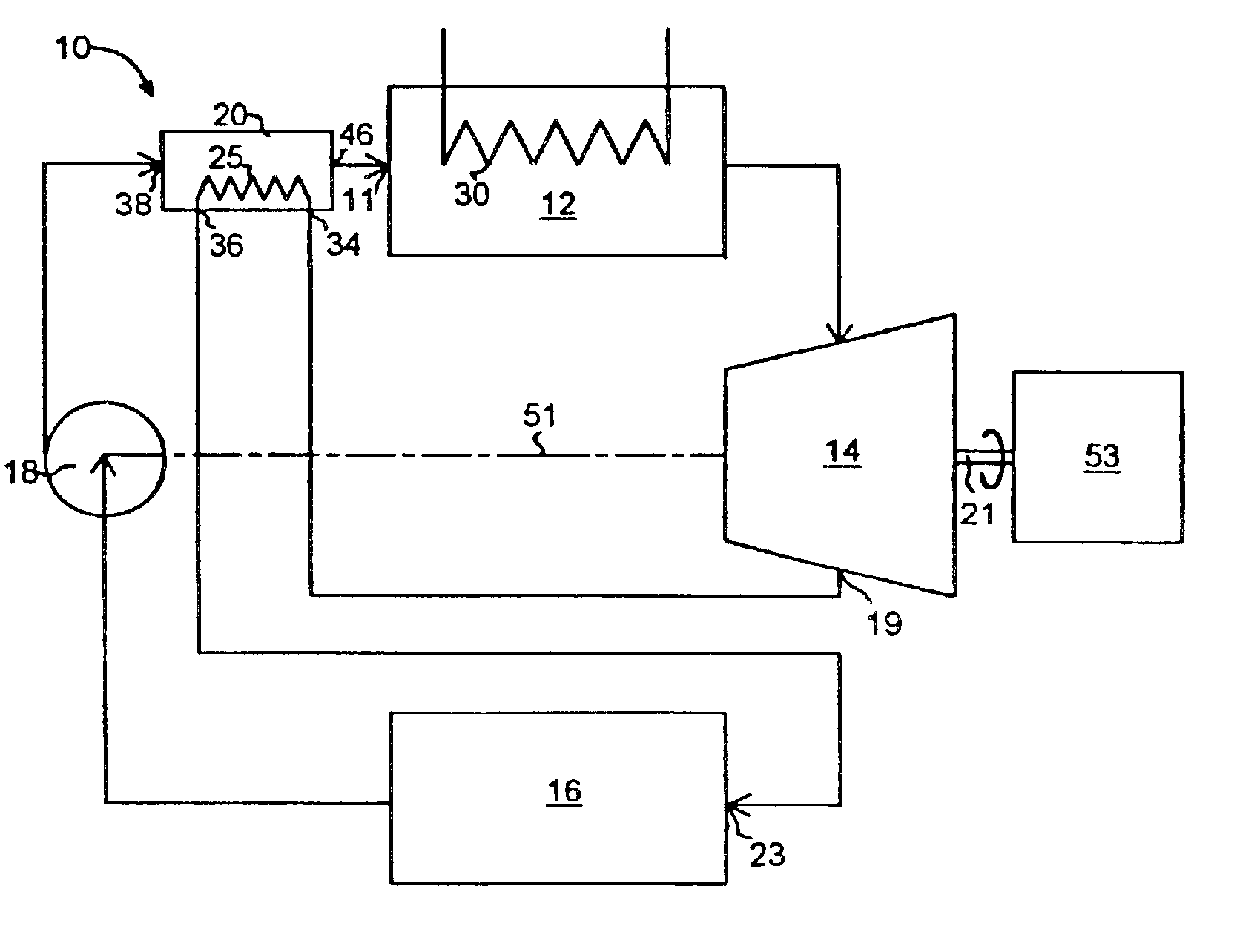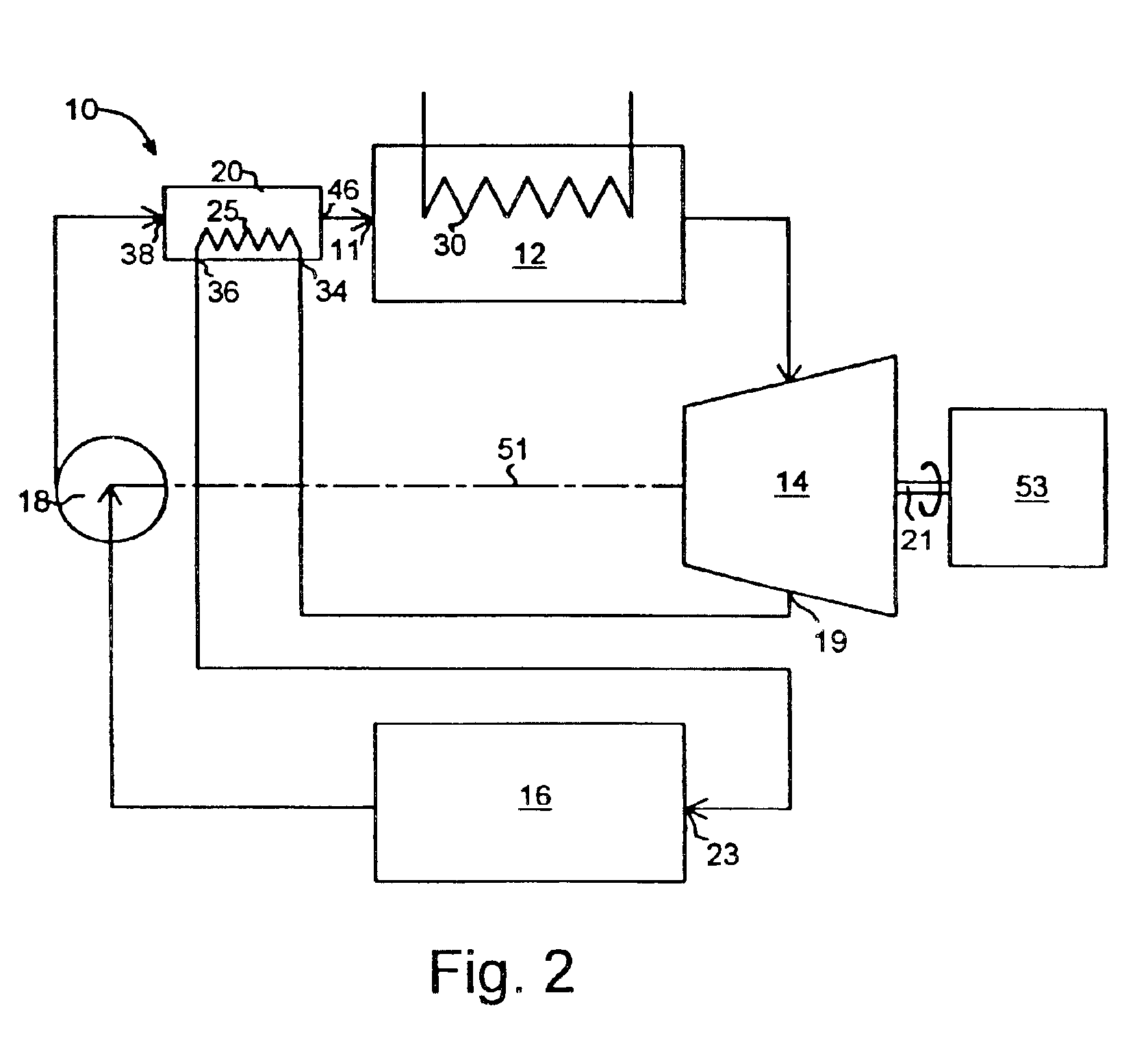Heat engine
a heat engine and engine body technology, applied in the field of heat engines, can solve the problems of insufficient supply of drinking water and water for irrigation, lack of infrastructure, and inability to provide electrical grid, and achieve the effect of improving efficiency
- Summary
- Abstract
- Description
- Claims
- Application Information
AI Technical Summary
Benefits of technology
Problems solved by technology
Method used
Image
Examples
embodiment 800
[0185]The vertical space 806b of generator 800 contains an exhaust distributor 822 attached to the interior wall of vertical section cylinder 844b for improved heat transfer from the combustion products 826 to the working solution contained first fluid space 802b. In effect, embodiment 800 of FIG. 39 has gas fired into horizontal cylinder section 844a with a vertical shell (first fluid space) 802b and tube 846 tube extension. The LiBr-water working solution flows in the annulus 802a around the central fired cylinder 844a. The central horizontal cylinder 844a has helical fins 848 about its exterior surface with the circulating heating fluid 830 flowing in tube 846 wound between the helical fins 848. Circulating fluid 830 also flows in the interior of helical tube 846 within the annulus (first fluid space) 802b around the vertically fired cylinder 844b. As illustrated, the hot heating fluid 830 enters the vertical portion of the vertical fluid space 804b via inlet 808, flows downward ...
embodiment 900
[0186]Embodiment 900 shown in FIG. 40 consists of a cylindrical space in which the working solution 932 flows and which has two sets of vertical tubes, one set 946 for a heating fluid such as a solar fluid and a second set 944 for a second heating fluid such as hot combustion products 926. A separator 916 allows for separation of the two-phase working solution 932 into the refrigerant vapor component and the weak working solution (absorbent) 920.
[0187]The generator 900 has a cylindrical first fluid space 902 formed in the interior of cylinder 942, a second fluid space 904 in heat exchange relation with first fluid space 902 with the second fluid space 904 being an interior tubular space formed by a plurality of tubular vertical members 946 opening to an upper manifold 956 with an inlet 908 and a lower manifold 958 with an outlet 910, and a third fluid space 906 in heat exchange relation with first fluid space 902 and being the interior tubular space formed from by a plurality of tub...
PUM
 Login to View More
Login to View More Abstract
Description
Claims
Application Information
 Login to View More
Login to View More - R&D
- Intellectual Property
- Life Sciences
- Materials
- Tech Scout
- Unparalleled Data Quality
- Higher Quality Content
- 60% Fewer Hallucinations
Browse by: Latest US Patents, China's latest patents, Technical Efficacy Thesaurus, Application Domain, Technology Topic, Popular Technical Reports.
© 2025 PatSnap. All rights reserved.Legal|Privacy policy|Modern Slavery Act Transparency Statement|Sitemap|About US| Contact US: help@patsnap.com



